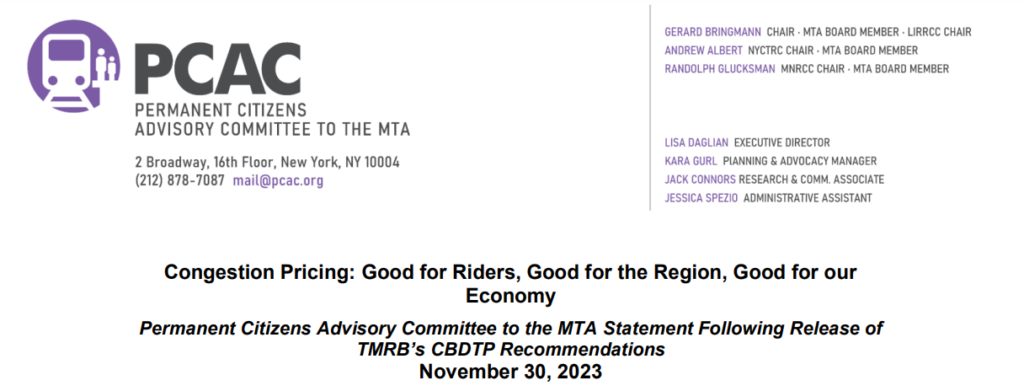Lisa Daglian, Executive Director of the Permanent Citizens Advisory Committee to the MTA (PCAC) said:
“Congestion pricing is one step closer to the finish line after decades of anticipation and planning, and we couldn’t be happier. It will be good for transit riders, good for the region and good for our economy. Congestion pricing will even be good for those who choose to – or must – drive into the Central Business District and who will find it easier to get around. The same goes for the emergency and paratransit vehicles and buses that are caught in torturous gridlock.
“The benefits are many-fold: cleaner air, less traffic and funding for critical transit projects around the region totaling some $15 billion. That’s an investment in our future, including critical state-of-good-repair and accessibility work, essential resiliency and sustainability efforts, and expansion projects like IBX and Penn Access. Conversely, we’ve seen the cost of disinvestment and it’s way too high. It’s time to move full speed ahead.
“The recommendations are fair, equitable, reasonable, rational and realistic, and reflect TMRB’s deliberative process. The base $15 congestion rate charged once per day is a good balance: high enough to make people think twice about driving, but not too high for those with no choice. Members’ concerns about shift workers being double tolled resulted in healthier discounts during overnight hours. That should also give other drivers reason to think about driving when there is less traffic and the tolls are lower, if they can. TMRB members also listened to motorcyclists and came out with a lower rate. These are examples of public process and public input at work.
“We thank the TMRB members for the time they put in and thought they gave over months of deliberations to dozens of various policy considerations in order to satisfy the program goals and statutory requirements. With over 120 exemption requests, the TMRB had a herculean task of balancing the needs and interests of communities around our four-state megalopolis. We are confident in the process by which these recommendations were formulated.
“After more than two decades of debate, legislation in 2019 paved the way for an extensive public review process that resulted in an extremely thorough Environmental Assessment, coming in at more than 4,000 pages following hours of public meetings.
“To opponents of congestion pricing in New Jersey and beyond, we say this: get on board or get out of the way!”
